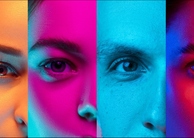|
The LGBT Movement in China: Public Perception, Stigma, and the Human Rights Debate
In many countries, LGBT legal reform has initiated with the decriminalization of homosexuality and been followed by developments in broader civil society before further legislative reform. In China, however, efforts to address homosexuality in civil society do not directly address the problems related to prejudice, stigma, and social discrimination, or educating the public in LGBT issues, therefore limiting protection through legislative reform.
LGBT organizations must work to combat these issues in civil society by targeting the cultural and historical emphasis towards the unacceptability of homosexuals that exists in society today as societal pressure and discrimination are the main bottlenecks the LGBT movement face in prompting legislative reform. The urgency for the modification of attitudes and beliefs of individuals, families, and communities in all parts of China to include the promotion and protection of LGBT rights begins with spreading valid knowledge about the community and the discrimination LGBT individuals experience in China. By advocating for comprehensive education efforts in various parts of society, the LGBT community can reclaim their sexuality, rid themselves of shame and prejudice, and educate individuals and each other about the LGBT movement, community, and demand for equality.
Overall, current sexual education efforts in China have served more as a method of regulating sexual behavior than it has in actually educating individuals; additionally, they are not conducive to increasing knowledge around LGBT issues and therefore reducing discrimination against the LGBT community. In the China Country report developed by the United Nations, the report reveals that the Chinese Ministry of Education’s sexual curriculum regulations always focuses on standard hetero-normative frameworks, or often promotes sexual abstinence, and sometimes teaches the pathologization of homosexuality. This means that high school students do not receive information about LGBT issues and are sometimes exposed to homosexuality as a as medically or psychologically abnormal phenomenon. In the project “Outline of Sexual Health Education in Primary and Middle Schools in Beijing City,” the Ministry of Education provided an outline for the planning of personal health and sex education curriculum across 48 schools in Beijing.
Perspectives such as sexual orientation and gender diversity are absent from this plan and sometimes the literature is hostile to sexual and gender diversity. Furthermore, the textbook on sex education for parents, titled “Adolescence: A Must-read” defines homosexuality as a form of deviance. This harmful rhetoric and misrepresentation of sexuality prevents LGBT youth from understanding their sexuality whilst allowing discriminatory misconceptions of homosexuality to go unchallenged and discrimination and bullying to run rampant in schools. Aibai Culture and Education Center conducted a survey in 2012 that showed 77 percent of respondents have encountered bullying based on sexual orientation or gender identity and 59% reporting negative consequences on their school performances because of bullying.
Instead, LGBT organizations should work to expand the sexual education curriculum in China in an effort to battle discrimination and bullying created from incorrect knowledge. An effort must be made to identify existing teaching materials and textbooks that contain invalid information on sexual orientation and gender identity and propose changes to the relevant authorities. The proposed changes should include the integration of LGBT perspectives and curricula into new teaching materials, working with teachers, educational institutions, and authorities to stop bullying, and proper education regarding safe-sex practices and STDs, most importantly HIV/AIDS. By acknowledging and addressing sexual orientation, gender identity, and sexual health in curriculums at China, the LGBT could successfully lessen the effects of homophobia manifested in discrimination, bullying, harassment, family disapproval, social isolation, and violence. Awareness of and exposure to sexual knowledge can convert wrong attitudes toward sexual practices, despite differences in sex, age, and educational background, highlighting the possibility of a new, non-discriminatory paradigm of Chinese sexual expression and understanding of LGBT individuals.
Because of the discrimination that occurs between LGBT individuals and civil servants, the proposed education reform in schools can and should be used and adapted by the Chinese LGBT community and organizations to provide anti-discrimination, sexual orientation, and gender identity trainings to government workers and national officials in leading national administrative training centers. If LGBT organizations in China work to educate these individuals and improve their knowledge of discrimination and LGBT issues at both local and central party levels, the LGBT movement and calls for legislative reform and equality will not be met with the same level of discrimination or bias as before. The current lack of proper legal protections for LGBT individuals in China leads to a majority of discrimination cases to go unreported and unnoticed; also, victims do not report them because they fear they will be further victimized.
To further extrapolate on the legal status of LGBT individuals in China, there have been multiple reports of the police, public security services, and broader society using the sexual element of LGBT people’s sexuality against them and threatening to reveal their sexuality, resulting in LGBT people facing extortion and blackmail from these channels. The pivoting of LGBT organizations in China towards battling discrimination in civil society through educating these workers, government officials, and health-care providers will help these professionals develop the sensitivity, skills, and knowledge to work specifically and non-discriminatorily with LGBT individuals. Judicial sensitization to LGBT issues and discrimination through education programs is especially needed to prevent unfair court rulings, as are properly equipped health service-providers with non-judgmental attitudes to serve the LGBT population.
Most importantly, efforts must be made by LGBT organizations to end discrimination within the LGBT community in China as to create a supportive, efficient, and organized minority capable of revealing discrimination in society, obtaining equal rights, and directing legislative reform. The LGBT community should work to end discriminating against each other based on their marital, socio-economic, or HIV status in order carry out community-based research to fuel research on LGBT issues and fight the stigmas resulting from improper public discourse. The new data collected on a variety of issues, such as HIV, societal change and movement, sexual rights, discrimination, and cultural attitudes can then be used to produce valuable reports using both quantitative and qualitative methods to lay the groundwork for community actions as well as law reform and policy building.
Combined with increased training of LGBT individuals to be more technology savvy in advocating for LGBT equal rights, these reports can be published through mainstream media, journals, and academic conferences, creating a mechanism for academic institutions to continue research on LGBT issues while simultaneously tackling the inadequate portrayal of the LGBT individuals in the media. In developing a more accepting community, the Chinese LGBT scene can not only reclaim AIDS/HIV and increase more preventative measures and awareness among their community—a major source of discrimination—but also develop and obtain their rights to health and sexuality, just as their Western counterparts did in the 1980s.
Through public efforts and calls for education reform both within and outside of the LGBT community in China, the LGBT community can successfully work to change public perception and the rhetoric surrounding homosexuality in China. Whether the message for equality rings in schools across the country, legislative hearings, or training programs for civil servants, the battle for equality and the right to marry, adopt, and work as a proud member of the LGBT will quickly follow the implementation of non-discriminatory education policies.
Aibai Culture and Education Center. Report of the Online Survey on Homophobic and Transphobic Bully at Education Institutions. May 2012. Available at http://www.aibai.cn/ebook/library/ebook_aibai/download/2016/01/01/ Report%20of%20the%20Online%20Survey%20on%20Homophobia%20and%20Trans-phobia%20Bully(1).pdf
Ding, Fan, and Wenxu Xu. "Being LGBT in Asia: China Country Report."United Nations Development Programme. USAID, Nov. 2015. Web. 02 Jan. 2016.
Fang, Gang, Reflections on the introduction of sex education in schools sex education. China Sexuality Science, 2007.
Gil, Vincent E.. “An Ethnography of HIV/AIDS and Sexuality in the People's Republic of China.”The Journal of Sex Research28.4 (1991): 521–537. Web...
Gil, Vincent E.. “Sinic Conundrum: A History of HIV/AIDS in the People's Republic of China.”The Journal of Sex Research31.3 (1994): 211–217. Web...
Gil, Vincent E.. “The Cut Sleeve Revisited: A Brief Ethnographic Interview with a Male Homosexual in Mainland China.”The Journal of Sex Research29.4 (1992): 569–577. Web...
HIV and Young Men Who Have Sex With Men. Tech. World Health Organization & UNAIDS, 2015. Web. 02 Jan. 2016.
Levine, Jonathan. "In China, LGBT Citizens Seek Acceptance."CNN. CNN, 28 June 2013. Web. 10 Jan. 2016.
Li X, Lu H, Ma X, et al. HIV/AIDS-related stigmatizing and discriminatory attitudes and recent HIV testing among men who have sex with men in Beijing. AIDS Behav. 2012;16:499–507.
Louise T. Higgins, and Chunhui Sun. “Gender, Social Background and Sexual Attitudes Among Chinese Students.”Culture, Health & Sexuality9.1 (2007): 31–42. Web...
Mountford, Tom.The Legal Status and Position of Lesbian, Gay, Bisexual and Transgender People in the People’s Republic of China.OutRight Action International. The Honorable Society of the Inner Temple, n.d. Web. 07 Jan. 2016.
Rodney H. Jones. “Mediated Action and Sexual Risk: Searching for 'culture' in Discourses of Homosexuality and AIDS Prevention in China.”Culture, Health & Sexuality1.2 (1999): 161–180. Web.
Survey for Homosexuality Acceptance: Beijing, Shanghai, Guangzhou Citizens’ Acceptance of Homosexuality. Available in Chinese at http://news.shangdu.com/401/20121102/13_5727705.shtml, 03 Jan 2016.
Tang W, Mahapatra T, Tucker JD, Zhao J, Detels R (2014) Prejudice, Stigma and Social Discrimination: Perceived Barriers in HIV Prevention and Control among Men Who Have Sex with Men in China. J Clin Case Rep 4: 448. doi:10.4172/2165-7920.1000448
World Report 2013: China. Rep. Human Rights Watch, Nov. 2013. Web. 03 Jan. 2016.
World Report 2015: China. Rep. Human Rights Watch, Nov. 2015. Web. 03 Jan. 2016.
Yanqiu Rachel Zhou. “Homosexuality, Seropositivity, and Family Obligations: Perspectives of Hiv-infected Men Who Have Sex with Men in China.”Culture, Health & Sexuality. 8.6 (2006): 487–500. Web.
- Ding, Fan, and Wenxu Xu. "Being LGBT in Asia: China Country Report."United Nations Development Programme. USAID, Nov. 2015. Web. 02 Jan. 2016.
- Ibid, page 3
- Mountford, Tom.The Legal Status and Position of Lesbian, Gay, Bisexual and Transgender People in the People’s Republic of China.OutRight Action International. The Honorable Society of the Inner Temple, n.d. Web. 07 Jan. 2016.
- Ibid, page 2
- Ibid, page 3.
- Gil, Vincent E.. “The Cut Sleeve Revisited: A Brief Ethnographic Interview with a Male Homosexual in Mainland China.”The Journal of Sex Research29.4 (1992): 570. Web...
- Mountford, Tom.The Legal Status and Position of Lesbian, Gay, Bisexual and Transgender People in the People’s Republic of China.OutRight Action International. The Honorable Society of the Inner Temple, Page 16. Web. 07 Jan. 2016.
- Ibid.
- Ding, Fan, and Wenxu Xu. "Being LGBT in Asia: China Country Report."United Nations Development Programme. USAID, Nov. 2015. Page 39. Web. 02 Jan. 2016.
- Yanqiu Rachel Zhou. “Homosexuality, Seropositivity, and Family Obligations: Perspectives of Hiv-infected Men Who Have Sex with Men in China.”Culture, Health & Sexuality8.6 (2006): 489. Web...
- Levine, Jonathan. "In China, LGBT Citizens Seek Acceptance."CNN. CNN, 28 June 2013. Web. 10 Jan. 2016.
- Ding, Fan, and Wenxu Xu. "Being LGBT in Asia: China Country Report."United Nations Development Programme. USAID, Nov. 2015. Web. 02 Jan. 2016.
- Mountford, Tom.The Legal Status and Position of Lesbian, Gay, Bisexual and Transgender People in the People’s Republic of China.OutRight Action International. The Honorable Society of the Inner Temple, Page 11. Web. 07 Jan. 2016.
- Ibid, page 3.
- Ding, Fan, and Wenxu Xu. "Being LGBT in Asia: China Country Report."United Nations Development Programme. USAID, Nov. 2015. Web. 02 Jan. 2016.
- Mountford, Tom.The Legal Status and Position of Lesbian, Gay, Bisexual and Transgender People in the People’s Republic of China.OutRight Action International. The Honorable Society of the Inner Temple, Page 13. Web. 07 Jan. 2016.
- Ibid, page 14.
- Rodney H. Jones. “Mediated Action and Sexual Risk: Searching for 'culture' in Discourses of Homosexuality and AIDS Prevention in China.”Culture, Health & Sexuality1.2 (1999): 168. Web
- Ding, Fan, and Wenxu Xu. "Being LGBT in Asia: China Country Report."United Nations Development Programme. USAID, Nov. 2015. Page 14. Web. 02 Jan. 2016.
- Tang W, Mahapatra T, Tucker JD, Zhao J, Detels R (2014) Prejudice, Stigma and Social Discrimination: Perceived Barriers in HIV Prevention and Control among Men Who Have Sex with Men in China. Page 7. J Clin Case Rep 4: 448.
- Gil, Vincent E.. “Sinic Conundrum: A History of HIV/AIDS in the People's Republic of China.”The Journal of Sex Research31.3 (1994): 212. Web.
- Ding, Fan, and Wenxu Xu. "Being LGBT in Asia: China Country Report."United Nations Development Programme. USAID, Nov. 2015. Page 11. Web. 02 Jan. 2016.
- Ibid, page 29.
- Ibid, 30
- Aibai Culture and Education Center. Report of the Online Survey on Homophobic and Transphobic Bully at Education Institutions. May 2012.
- Gil, Vincent E.. “An Ethnography of HIV/AIDS and Sexuality in the People's Republic of China.”The Journal of Sex Research28.4 (1991): 535. Web.
- Ding, Fan, and Wenxu Xu. "Being LGBT in Asia: China Country Report."United Nations Development Programme. USAID, Nov. 2015. Page 24. Web. 02 Jan. 2016.
- World Report 2015: China. Rep. Human Rights Watch, Nov. 2015. Web. 03 Jan. 2016.
- HIV and Young Men Who Have Sex With Men. Tech. World Health Organization & UNAIDS, 2015. Page 24. Web. 02 Jan. 2016.
- Yanqiu Rachel Zhou. “Homosexuality, Seropositivity, and Family Obligations: Perspectives of Hiv-infected Men Who Have Sex with Men in China.”Culture, Health & Sexuality8.6 (2006): 498. Web...
- Ding, Fan, and Wenxu Xu. "Being LGBT in Asia: China Country Report."United Nations Development Programme. USAID, Nov. 2015. Page 25. Web. 02 Jan. 2016.
Aibai Culture and Education Center. Report of the Online Survey on Homophobic and Transphobic Bully at Education Institutions. May 2012. Available at http://www.aibai.cn/ebook/library/ebook_aibai/download/2016/01/01/ Report%20of%20the%20Online%20Survey%20on%20Homophobia%20and%20Trans-phobia%20Bully(1).pdf
Ding, Fan, and Wenxu Xu. "Being LGBT in Asia: China Country Report."United Nations Development Programme. USAID, Nov. 2015. Web. 02 Jan. 2016.
Fang, Gang, Reflections on the introduction of sex education in schools sex education. China Sexuality Science, 2007.
Gil, Vincent E.. “An Ethnography of HIV/AIDS and Sexuality in the People's Republic of China.”The Journal of Sex Research28.4 (1991): 521–537. Web...
Gil, Vincent E.. “Sinic Conundrum: A History of HIV/AIDS in the People's Republic of China.”The Journal of Sex Research31.3 (1994): 211–217. Web...
Gil, Vincent E.. “The Cut Sleeve Revisited: A Brief Ethnographic Interview with a Male Homosexual in Mainland China.”The Journal of Sex Research29.4 (1992): 569–577. Web...
HIV and Young Men Who Have Sex With Men. Tech. World Health Organization & UNAIDS, 2015. Web. 02 Jan. 2016.
Levine, Jonathan. "In China, LGBT Citizens Seek Acceptance."CNN. CNN, 28 June 2013. Web. 10 Jan. 2016.
Li X, Lu H, Ma X, et al. HIV/AIDS-related stigmatizing and discriminatory attitudes and recent HIV testing among men who have sex with men in Beijing. AIDS Behav. 2012;16:499–507.
Louise T. Higgins, and Chunhui Sun. “Gender, Social Background and Sexual Attitudes Among Chinese Students.”Culture, Health & Sexuality9.1 (2007): 31–42. Web...
Mountford, Tom.The Legal Status and Position of Lesbian, Gay, Bisexual and Transgender People in the People’s Republic of China.OutRight Action International. The Honorable Society of the Inner Temple, n.d. Web. 07 Jan. 2016.
Rodney H. Jones. “Mediated Action and Sexual Risk: Searching for 'culture' in Discourses of Homosexuality and AIDS Prevention in China.”Culture, Health & Sexuality1.2 (1999): 161–180. Web.
Survey for Homosexuality Acceptance: Beijing, Shanghai, Guangzhou Citizens’ Acceptance of Homosexuality. Available in Chinese at http://news.shangdu.com/401/20121102/13_5727705.shtml, 03 Jan 2016.
Tang W, Mahapatra T, Tucker JD, Zhao J, Detels R (2014) Prejudice, Stigma and Social Discrimination: Perceived Barriers in HIV Prevention and Control among Men Who Have Sex with Men in China. J Clin Case Rep 4: 448. doi:10.4172/2165-7920.1000448
World Report 2013: China. Rep. Human Rights Watch, Nov. 2013. Web. 03 Jan. 2016.
World Report 2015: China. Rep. Human Rights Watch, Nov. 2015. Web. 03 Jan. 2016.
Yanqiu Rachel Zhou. “Homosexuality, Seropositivity, and Family Obligations: Perspectives of Hiv-infected Men Who Have Sex with Men in China.”Culture, Health & Sexuality. 8.6 (2006): 487–500. Web.
Endnotes
- Ding, Fan, and Wenxu Xu. "Being LGBT in Asia: China Country Report."United Nations Development Programme. USAID, Nov. 2015. Web. 02 Jan. 2016.
- Ibid, page 3
- Mountford, Tom.The Legal Status and Position of Lesbian, Gay, Bisexual and Transgender People in the People’s Republic of China.OutRight Action International. The Honorable Society of the Inner Temple, n.d. Web. 07 Jan. 2016.
- Ibid, page 2
- Ibid, page 3.
- Gil, Vincent E.. “The Cut Sleeve Revisited: A Brief Ethnographic Interview with a Male Homosexual in Mainland China.”The Journal of Sex Research29.4 (1992): 570. Web...
- Mountford, Tom.The Legal Status and Position of Lesbian, Gay, Bisexual and Transgender People in the People’s Republic of China.OutRight Action International. The Honorable Society of the Inner Temple, Page 16. Web. 07 Jan. 2016.
- Ibid.
- Ding, Fan, and Wenxu Xu. "Being LGBT in Asia: China Country Report."United Nations Development Programme. USAID, Nov. 2015. Page 39. Web. 02 Jan. 2016.
- Yanqiu Rachel Zhou. “Homosexuality, Seropositivity, and Family Obligations: Perspectives of Hiv-infected Men Who Have Sex with Men in China.”Culture, Health & Sexuality8.6 (2006): 489. Web...
- Levine, Jonathan. "In China, LGBT Citizens Seek Acceptance."CNN. CNN, 28 June 2013. Web. 10 Jan. 2016.
- Ding, Fan, and Wenxu Xu. "Being LGBT in Asia: China Country Report."United Nations Development Programme. USAID, Nov. 2015. Web. 02 Jan. 2016.
- Mountford, Tom.The Legal Status and Position of Lesbian, Gay, Bisexual and Transgender People in the People’s Republic of China.OutRight Action International. The Honorable Society of the Inner Temple, Page 11. Web. 07 Jan. 2016.
- Ibid, page 3.
- Ding, Fan, and Wenxu Xu. "Being LGBT in Asia: China Country Report."United Nations Development Programme. USAID, Nov. 2015. Web. 02 Jan. 2016.
- Mountford, Tom.The Legal Status and Position of Lesbian, Gay, Bisexual and Transgender People in the People’s Republic of China.OutRight Action International. The Honorable Society of the Inner Temple, Page 13. Web. 07 Jan. 2016.
- Ibid, page 14.
- Rodney H. Jones. “Mediated Action and Sexual Risk: Searching for 'culture' in Discourses of Homosexuality and AIDS Prevention in China.”Culture, Health & Sexuality1.2 (1999): 168. Web
- Ding, Fan, and Wenxu Xu. "Being LGBT in Asia: China Country Report."United Nations Development Programme. USAID, Nov. 2015. Page 14. Web. 02 Jan. 2016.
- Tang W, Mahapatra T, Tucker JD, Zhao J, Detels R (2014) Prejudice, Stigma and Social Discrimination: Perceived Barriers in HIV Prevention and Control among Men Who Have Sex with Men in China. Page 7. J Clin Case Rep 4: 448.
- Gil, Vincent E.. “Sinic Conundrum: A History of HIV/AIDS in the People's Republic of China.”The Journal of Sex Research31.3 (1994): 212. Web.
- Ding, Fan, and Wenxu Xu. "Being LGBT in Asia: China Country Report."United Nations Development Programme. USAID, Nov. 2015. Page 11. Web. 02 Jan. 2016.
- Ibid, page 29.
- Ibid, 30
- Aibai Culture and Education Center. Report of the Online Survey on Homophobic and Transphobic Bully at Education Institutions. May 2012.
- Gil, Vincent E.. “An Ethnography of HIV/AIDS and Sexuality in the People's Republic of China.”The Journal of Sex Research28.4 (1991): 535. Web.
- Ding, Fan, and Wenxu Xu. "Being LGBT in Asia: China Country Report."United Nations Development Programme. USAID, Nov. 2015. Page 24. Web. 02 Jan. 2016.
- World Report 2015: China. Rep. Human Rights Watch, Nov. 2015. Web. 03 Jan. 2016.
- HIV and Young Men Who Have Sex With Men. Tech. World Health Organization & UNAIDS, 2015. Page 24. Web. 02 Jan. 2016.
- Yanqiu Rachel Zhou. “Homosexuality, Seropositivity, and Family Obligations: Perspectives of Hiv-infected Men Who Have Sex with Men in China.”Culture, Health & Sexuality8.6 (2006): 498. Web...
- Ding, Fan, and Wenxu Xu. "Being LGBT in Asia: China Country Report."United Nations Development Programme. USAID, Nov. 2015. Page 25. Web. 02 Jan. 2016.
Save Citation » (Works with EndNote, ProCite, & Reference Manager)
APA 6th
Mavraj, A. (2016). "The LGBT Movement in China: Public Perception, Stigma, and the Human Rights Debate." Inquiries Journal, 8(12). Retrieved from http://www.inquiriesjournal.com/a?id=1503
MLA
Mavraj, Arber. "The LGBT Movement in China: Public Perception, Stigma, and the Human Rights Debate." Inquiries Journal 8.12 (2016). <http://www.inquiriesjournal.com/a?id=1503>
Chicago 16th
Mavraj, Arber. 2016. The LGBT Movement in China: Public Perception, Stigma, and the Human Rights Debate. Inquiries Journal 8 (12), http://www.inquiriesjournal.com/a?id=1503
Harvard
MAVRAJ, A. 2016. The LGBT Movement in China: Public Perception, Stigma, and the Human Rights Debate. Inquiries Journal [Online], 8. Available: http://www.inquiriesjournal.com/a?id=1503
Suggested Reading from Inquiries Journal
This paper discusses the structural violence experienced by lesbian, gay, bisexual, trans, intersex, or queer (LGBTIQ+) people and people with disabilities (PWD), and reviews the international human rights protections available... MORE»
South Korea does not have a strong and visible lesbian, gay, bisexual, transgender social movement in the public, despite active issue advocacy organizations, political representation from the Democratic Labour Party, and popular television shows that portray LGBT characters and themes.1 The LGBT movement has had a difficult time... MORE»
A faceless speaker cries out in a crowded square. Around him is an uneven cacophony produced by an undefined group of people. Fires crackle, smoke soars, and skies blacken. These masses rush frantically toward a new world order beckoning lustfully, greedily with open arms. They rush toward a vision of a new Ukraine–a European... MORE»
Since the inception of the American crime fighting force, law enforcement has struggled to prevent discrimination against minority populations. While “racial profiling” (also known as “racially biased policing”)[1] has been an issue within police departments for centuries, discrimination and profiling based... MORE»
Latest in Women's & Gender Studies
2022, Vol. 14 No. 10
The label of ‘science’ or ‘biology’ can become somewhat of a trump-card in excluding trans people from civil rights, because many scientific (and pseudo-scientific) opinions are weaponized during transgender rights debates... Read Article »
2022, Vol. 14 No. 09
Perceptions of menstruation as a taboo subject have historically characterized Western and non-Western societies alike and persist today, both perpetuating harmful cultural understandings of women’s abilities and normalizing institutional... Read Article »
2022, Vol. 14 No. 03
Using content analysis, this article focuses on the portrayal of female prisoners in the first two seasons of the Netflix show Orange is the New Black (OITNB). There are two main findings. First, the word "lesbian" frequently signals homophobia... Read Article »
2020, Vol. 12 No. 11
This paper investigates the convoluted societal processes to which the individual is exposed from an early age in order to form and acquire their sense of identity, and aims at dismantling these very processes by exhibiting their flimsy and unsubstantiated... Read Article »
2020, Vol. 12 No. 10
Centuries of subjugation under Spanish and American colonial rule have embedded an idealistic view of white beauty in the minds of Filipinos. It continues to be deeply rooted in Philippine culture due to the constant exposure of Filipina bodies... Read Article »
2020, Vol. 12 No. 10
This paper explores the woman’s body as a site of sanctity and disgust in the film Rosemary’s Baby. The character of Rosemary Woodhouse is depicted as a pure, virtuous, and feminine figure. She is positioned against other corrupted,... Read Article »
2020, Vol. 12 No. 10
Conversations about the gender expression of young children are often characterized by confusion, as parents, educators, and even child psychologists have a hard time determining where exactly children’s strong gendered beliefs and behaviors... Read Article »
|



















